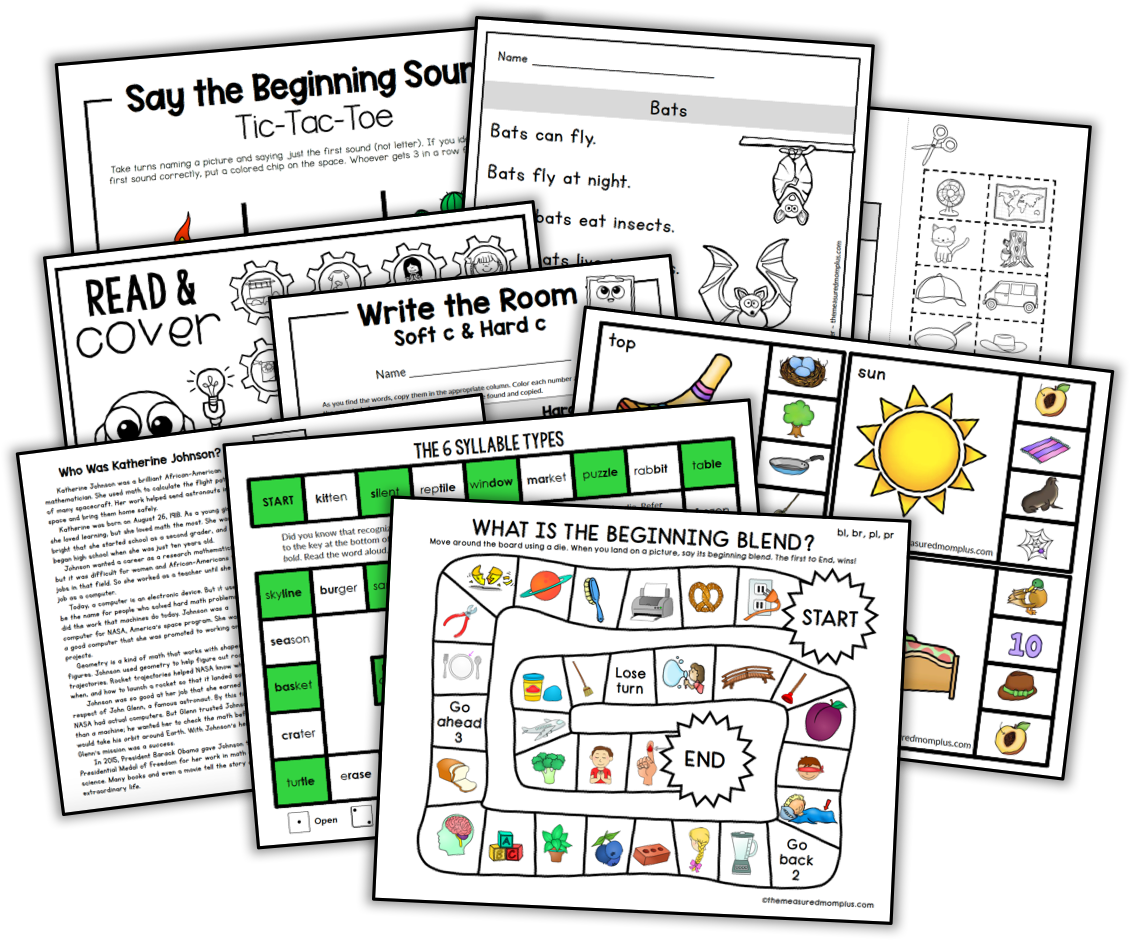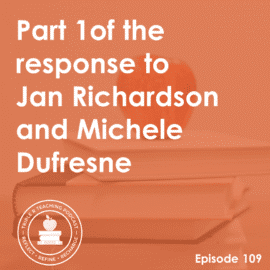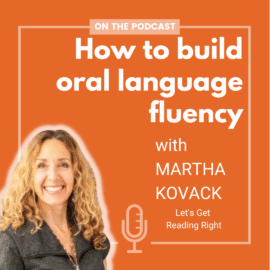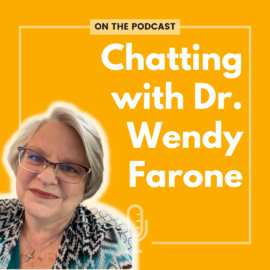
TRT Podcast #14: What makes a high quality decodable book?
It used to be that we had very few options when it came to decodable books. But times are changing, and new decodable books are published all the time. How do you separate the good from the bad? Make sure your decodable books have these four qualities.
Full episode transcript
In today's episode, we're going to talk about what makes a high quality decodable.
A decodable book, of course, is a book that has primarily words whose phonics patterns are those the students have already learned, so they can sound out most of the words in the book.
It used to be, if we wanted to use decodable books with our students, we just had to take what we could get. There weren't many options, and if the decodable book was a bunch of unrelated sentences with stilted language, so be it.
Well, times have changed, and now we have options. New series are being published all the time. So here are my qualifications for a good decodable book.
Number one, if it's a fiction decodable book, it tells a story. You know it tells a story because you can actually ask questions about the book. If you have a decodable book that goes all over the place, and you don't even know what you would say when it's done, you can't even think of a question to ask, that book should be a pass.
Number two, the best decodable books sound like we talk. In other words, we don't stuff in extra words just to get in more decodable text. This means we might have to put something in there that hasn't specifically been taught in order to preserve the sound of the English language. We wouldn't put, "He did sit on it." We don't talk like that, so I don't think books should include that. I would much rather have a book have an ED ending, even though that hasn't been explicitly taught, than throw in that word "did" or mix tenses, which is one of my pet peeves in decodable books.
Number three, the pictures should support the story without giving away the words. I'm ALL for pictures in decodable books, especially for the early ones, because you really can't tell much of a story with only one vowel and five consonants, but the pictures can carry the story, right? We can just have a single word on each page and the pictures can help us know exactly what's happening.
Number four, the books contain mostly decodable words. Some people think a decodable book should be one hundred percent decodable, except for a few irregular high frequency words, like "the" or "to." There's actually very little research about the use of decodable books, and there's definitely not research that says you need one hundred percent decodability, or any percent. It's really good to remember that if you are consistently using decodable books, and not leveled books, with your beginning readers, so they have learned to actually look at the words and sound them out, and their first go-to is not the pictures or the context or looking up at you, then it's not going to hurt them if, once in a while, there's a story word that they have to use the picture. It's okay.
I know this is really concerning for people. Wiley Blevins talks about this quite a bit, that it's not the end of the world to have a story word here and there to carry the story. We just want to make sure that our students are being taught to actually look at the words to read them.
So there you go! Those are my qualifications for high quality decodables. Fiction decodables tell a story. The best decodable books sound like we talk. The pictures support the story without giving away the words. And the books contain mostly decodable words, with perhaps a few story words thrown in for the books to be comprehensible, so that they actually make sense.
Next week, I'm going to share some of my favorite decodable books series! Check out the show notes for this episode at themeasuredmom.com/episode 14.
Sign up to receive email updates
Enter your name and email address below and I'll send you periodic updates about the podcast.
Check out our ultimate guide to decodable books HERE!







Kim
Hi Anna!
Your website has been such a blessing and encouragementI
I was hoping you could clarify something for me…Do you suggest teaching the entire alphabet
names A-Z before introducing any of the their sounds? My grandson is 5 and is having difficulty
making the letter/sound connection. Thank you so much!
Anna Geiger
Hi Kim! It really depends on the age level, but if your grandson is five I would teach both together. One thing you could do is focus on hearing sounds in words that start with the letter without connecting the letter to the sound. For example: When doing the letter f, you can ask, “What sound do you hear at the beginning of fish?” He would reply /f/ (not the letter itself, but the sound). If your grandson is not able to isolate that beginning sound, he really needs work on being able to do that first. Does that make sense? These games are great for phoneme isolation: https://www.themeasuredmom.com/phonemic-awareness-games/
Sarah Binder
Hi!
I purchased your letter of the week printable, but after reading this transcript, I was wondering if it came with access to the Letter Name Assessment document? Thanks so much! Love all your work!
Sarah
Anna G
Hi Sarah!
Currently that assessment is in our Alphabet Activities & Games bundle and is also included with the huge printable library of The Measured Mom Plus. A future update of the LOTW curriculum may include it, but it is not there currently. 🙂
Jais
Thanks for the good podcast to listen about How to help learners who struggle to learn the alphabet.
Maria Elena
Hi Anna,
Thanks for sharing wonderful ideas on how to teach students who struggle to learn the alphabet. I will need to modify my class schedule so as to include time to review the alphabet.
Nan
Isn’t learning the letter sounds more important than learning the letter names? You don’t actually need to know the letter names to start reading, just phonics. I taught my son to read using phonics and he just naturally learned the letter names. Seems for some kids making the transition from knowing the letter names to, ‘every letter makes a sound’ is hurdle.
Anna G
Both are important, but I believe in teaching letter names first for quite a few reasons (I go into detail about that in my online course, Teaching Every Reader). In my experience it hasn’t been a hurdle for kids to make the leap to knowing sounds from names; in fact, many names have the letter sound “built in.” But I definitely don’t think it’s harmful to teach letter sounds first.
Susan Dixon
Thanks Anna! I love all of your products that I have used so far! Especially the Letter of the Week Curriculum and all those great printables! Now I am enjoying the podcasts while cooking or cleaning the house.
I just purchased the Alphabet Editable Games Bundle–I am hoping I have the computer skills to figure it out. ; ) The Measured Mom + looks amazing–Very tempting! You have put great care into your work and it really shows. Thank you so much, Anna, for all your help in providing useful information and creating great tools to help learners, moms, and teachers.
Anna G
Thank you for your kind comment, Susan! Just send us an email if you have any challenges using the bundle. 🙂 Those editable games are incredibly useful!